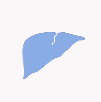CALL TODAY 646-846-1136 | EMAIL
Surgical Experts Dedicated to Improving Lives
At Lenox Hill Surgeons, our dedicated team of nyc surgeons and medical professionals provide compassionate care with the highest ethical & professional standards. In our state of the art facility, we offer surgical services using only the most cutting edge and current procedures and treatments.We specialize in general surgery, including extensive experience in performing hernia repair surgery. Our expertise is in minimally invasive surgery and robotic surgery. Minimally invasive and robotic surgery often allow patients to experience easier recovery than traditional open surgery. They also allow for more precise and less traumatic surgery. When robotic and minimally invasive surgery is not an option, we are also skilled and experienced in traditional open surgical procedures.
All of our doctors are experienced and skilled surgeons having undergone extensive training in school, residency and fellowships. They all practice medicine with ethical behavior, compassion and superb bedside manner. In the operating room they all exhibit precise mechanical abilities, analytical thinking and the ability to visualize tissue in three dimensions. These innate and learned skills allow our surgeons to be some of the most dexterous and skilled professionals in all of New York City and the Country.
Call us: 646-846-1136
About The Surgeons
PATIENT TESTIMONIALS
Recent Awards
We are honored and deeply appreciative to have consistently received prestigious awards and recognition year after year, establishing us as one of New York’s foremost hospitals for a wide range of general surgeries, safety measures, specialized procedures, and overall excellence in healthcare. At Lenox Hill Surgeons, our unwavering commitment lies in delivering exceptional care and unwavering support to our patients, guaranteeing their safety and successful recovery throughout their entire surgical experience.
Hospital Quality Awards
 America’s 50 Best Hospitals Award™ (2023, 2022)
America’s 50 Best Hospitals Award™ (2023, 2022)
Top 1% in the nation for providing the highest clinical quality year over year.

America’s 100 Best Hospitals Award™ (2021)
Top 2% in the nation for consistently delivering clinical quality year over year.

America’s 250 Best Hospitals Award™ (2023, 2022, 2021)
Top 5% in the nation for consistently delivering clinical quality.

Patient Safety Excellence Award™ (2023, 2022)
Top in the nation for providing excellence in patient safety by preventing infections, medical errors, and other preventable complications.
Specialty Clinical Quality Awards

America’s 100 Best Hospitals for Cardiac Care Award™ (2023, 2022, 2021, 2020, 2019)
Superior clinical outcomes in heart bypass surgery, coronary interventional procedures, heart attack treatment, heart failure treatment, and heart valve surgery.

America’s 100 Best Hospitals for Coronary Intervention Award™ (2023, 2022, 2021, 2020, 2019)
Superior clinical outcomes in coronary intervention procedures (angioplasty with stent).

America’s 100 Best Hospitals for Prostate Surgery Award™ (2023, 2022, 2021)
Superior clinical outcomes in prostate removal surgery and transurethral resection of the prostate.
Click to see all of our Healthgrades best doctors awards


Visit our main website at www.LenoxHillSurgeons.com
Blog Posts are Below:
Monthly Archives: September 2019
Gallstones
Gallstones are not stones. Instead, they are pebble-like solid pieces of digestive fluid that form in the gallbladder. The gallbladder is a small, pear-shaped pouch, found just beneath the liver, on the right side of the abdomen. The small organ stores digestive fluid called bile that flows from the liver to your small intestine.
The salt in the bile helps digest fat easily. It also contains waste products, such as cholesterol and bilirubin. When either of the waste products begins to cluster together as a solid lump, the result is the formation of gallstones. The size of the gallstones may be as large as a golf ball, or as small as a pearl.
Types of Gallstones
Two main types of gallstones that can form in the gallbladder include:
Cholesterol Gallstones
These are the most common types accounting for 80% of gallstones in the US citizens. The cholesterol gallstones are yellowish-green in color. They mainly comprise un-dissolved cholesterol, but may also contain other components.
Pigment Gallstones
Pigment gallstones are smaller and dark brown or black. When there is excessive amount of bilirubin in the bile, it forms pigment gallstones.
Symptoms
Gallstones often cause no signs or symptoms. The patient might not be aware of a gallstone’s existence unless a doctor diagnoses it. Nearly 20% of American adults may have gallstones, yet only around three percent of them develop any symptoms.
The symptoms start to appear when a gallstone lodges into a duct, causing a blockage. Hence, you feel excruciating pain in the upper right part of the abdomen. The pain may last from a few minutes to a few hours, or may come back in episodes, referred to as an “attack.”
You might experience pain in:
- Your right shoulder
- The center of your abdomen, just below the breastbone
- Back pain radiating between your shoulder blades
Or other signs like:
- Nausea or vomiting
- Digestive problems like bloating, heartburn, belching
- Intolerance for greasy food
- Jaundice and weight loss
Causes
Many reasons may cause you to have gallstones, including your weight, genes, diet, and gallbladder issues.
- The human body needs bile, but sometimes the liver excretes more cholesterol than the bile can dissolve. Thus, it may lead to crystal or gallstone formation.
- Bilirubin is another chemical produced during the breakdown of red blood cells. When the liver makes excessive bilirubin, it causes gallstones.
- When your gallbladder does not empty properly, the bile becomes concentrated, thereby forming gallstones.
Risks
Certain factors make people susceptible to gallbladder issues, especially gallstones. The people who are at risk include:
- Women, especially those who are pregnant, using birth control pills, or undergoing hormone replacement therapy
- Obese or overweight people
- People on a crash diet
- Diabetic patients
- Those using cholesterol-lowering drugs
Treatments
Silent gallstones usually don’t require any treatment. For the diagnosis, the doctor may draw a blood sample, recommend an ultrasound, endoscopy, or CT scan. However, if the symptoms appear, the patient may have to get the gallbladder removed through surgery.
Cholecystectomy
Cholecystectomy is a common procedure for gallbladder removal. The surgeon makes incisions in the abdomen and passes the surgical instruments, a light, and a camera for images, through the cuts. The doctor monitors the video and removes the gallbladder safely. After the surgery, the bile flows from your liver to the intestine directly. The patient may go home the same day following the surgery.
In open cholecystectomy, the doctor has to make bigger cuts to remove the gallbladder. Hence, the patient may have to stay in the hospital for a few days.
Medication
If surgery is not the best option for you because of your medical condition, then oral medications may help dissolve the gallstones. The doctor may prescribe Ursodiol (Actigall, Urso 250, Urso Forte), Chenodiol (Chenodol), or both. However, the process may take months or years. Thus, the gallstones may form again if the patient does not take the medication regularly.
Final Thoughts
Removing a gallbladder has no harmful effects on your digestion ability, and you can survive without a gallbladder. Our dedicated team of surgeons at Lenox Hill Surgeons uses the cutting edge technology and current procedures for a safe removal of the gallbladder. Contact us today if you have any of the symptoms stated above.
LENOX HILL SURGEONS
646-846-1136
lenoxhillsurgeons@gmail.com
Appendicitis
Appendicitis is one of the most common factors responsible for abdominal pain, which can lead to surgery. More than 5 percent of people in the US experience appendicitis at some point. However, the pain most often occurs in people aged between 10 and 30.
Appendicitis is the inflammation of a 3.5-inch long appendix tube that protrudes from the large intestine. The condition calls for an immediate treatment, most probably surgery to remove the appendix.
Leaving an inflamed appendix untreated will cause the tube to burst. Thus, the inflamed appendix may start spilling infectious bacteria into the abdominal cavity. And, it may prove fatal sometimes.
Symptoms of Appendicitis
Usually, the first sign of appendicitis is a sudden pain that begins in the upper abdomen and radiates to the lower right portion of the abdomen. The pain may become excruciating when you cough or walk.
The inflamed appendix may cause you to lose appetite, or you may feel nausea or vomiting as soon as the pain begins. Abdominal bloating and low-grade fever, usually 99 – 102 Fahrenheit, may also serve as signs of the inflammation of appendix.
The other symptoms of appendicitis include severe cramps, dull or sharp pain in the back, rectum, or the lower or upper abdomen.
What Causes Appendicitis?
While the root cause of appendicitis remains unknown in most of the cases, doctors believe that inflammation occurs when the appendix is blocked. The obstruction in the lining may occur due to hardened stool, intestinal worms, enlarged lymphoid follicles or cancer.
The blockage in the appendix results in an infection, which may multiply the bacteria. Thus, it leads to the swelling and formation of pus in the appendix, thereby causing inflammation. You may also feel severe pain in the abdominal region, and if not treated timely, the appendix may rupture.
Appendicitis’ Diagnosis
The symptoms of appendicitis are often confused with that of the gallbladder diseases, bladder or urine infection, intestinal infection, gastritis, and ovary problems. This makes the diagnosis of appendicitis tricky. Your doctor may conduct these tests for diagnosing the inflammation in the appendix.
- Examination of the abdominal region: This helps identify the stiffening of the abdominal muscles when the doctor applies pressure on the appendix.
- Rectal Exam: The doctor examines the lower rectum with a lubricated gloved finger.
- Blood Test: The blood tests show a high white blood cell count in the body, thereby indicating an infection.
- Urinalysis: The urine test helps rule out a urinary tract infection or a kidney stone as a possible cause of the pain.
- Imaging Tests: The doctor may require an abdominal X-ray, ultrasound, a CT scan, or an MRI of the patient for the diagnosis of appendicitis.
Treatment: Appendectomy
The standard treatment for all appendicitis is appendectomy, i.e., the removal of appendicitis. The doctor may either perform open surgery or a laparoscopic surgery depending on the severity of the problem.
During the open surgery, the doctor makes an incision, which is usually 2 to 4 inches long. Doctors perform this type of surgery when the appendix has ruptured, and an excess abscess or puss has formed around it. Thus, the doctor drains the fluid and cleans the abdominal cavity.
Once the infection is under control, the doctor may perform minimally invasive or laparoscopic surgery. The surgeon will use some incisions to insert surgical instruments and a video camera into the abdominal region to remove the appendix.
Final Word
Do not neglect the pain that you experience in your abdomen. It may be a sign of an inflamed appendix. If you do not go for a treatment promptly, it may cause your appendix to rupture. Contact Lenox Hill Surgeons in NYC today and book an appointment with the experts of minimally invasive surgery.


















